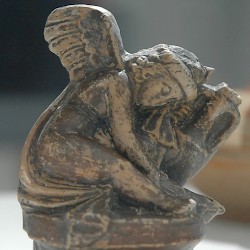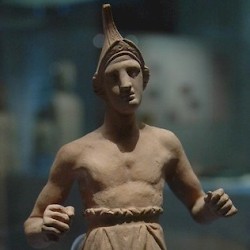Amphipolis (Ennea Hodoi)
Q217414Amphipolis: Greek town in Thrace, colony of Athens, of great strategic importance. Its port was Eïon.

Human occupation of the area of Amphipolis dates back to prehistoric times. In the sixth century BCE, it was a settlement of the Thracian tribe of the Edones, favorably situated on a hilltop ("hill 133") on the east bank of the river Strymon.
Ennea Hodoi and Eïon
In those days, it was called Ennea Hodoi, "nine roads". The inhabitants controlled the valley of the Strymon, strategically important forests with tall trees (necessary for anyone who wanted to build a ship), and the route from Macedonia to Thrace that was later known as Via Egnatia. The road crossed the river near Ennea Hodoi; in fact, it was the last place where one could cross the Strymon before it reached the Aegean Sea at Eïon, 4½ km below Ennea Hodoi. The most important asset of the town, however, was the presence of gold mines in the nearby Pangaion mountains.
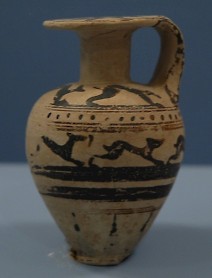
When the Persian king Darius I the Great invaded Europe in c.513, he sent his general Megabazus to the west, to subdue the Paeones in the valley of the Strymon. They were deported to Phrygianote and Eïon was founded as the capital of the European possessions of the Achaemenid Empire, and it is likely that the Edonians in Ennea Hodoi benefited economically from the demand of the nearby Persian garrison. Herodotus of Halicarnassus records a tradition that the Milesian leas Histiaeus received land in this area, where in c.512 they founded a colony; its name was Myrcinus.note Diodorus of Sicily records an alternative tradition that it was Aristagoras who founded Amphipolis, also saying that this colony was not long-lived.note
Persian War
When king Xerxes invaded Greece in 480, there was a (temporary?) bridge at Ennea Hodoi, where the Persian king sacrificed nine boys and nine girls - at least, according to the Greek researcher Herodotus of Halicarnassus, who may be wrong, because human sacrifice is not known as a Persian custom.
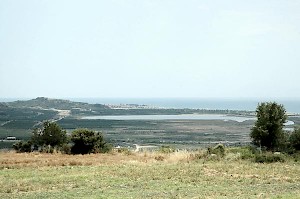
Because Eïon and Ennea Hodoi were of the greatest strategic importance, the Athenians attempted to conquer these towns. Their first attempt was in 497, when the Persians were occupied with the Ionian Revolt. This first attempt met with ill-success, because when the revolt was over, the Persian general Mardonius restored order in Thrace. He even added Macedonia to the Achaemenid Empire (492), so that the twin towns were now on all sides surrounded by Persian territory.

After Xerxes had recalled most Persian troops in the winter of 480/479, the Athenians for the second time tried to reconquer the area. In the winter of 476/475, their general Cimon laid siege to Eïon and captured it; its last Persian commander, Boges, committed suicide. Ten years after, the Athenians tried to capture Ennea Hodoi as well, but this time, they were defeated. The leader of the expeditionary force, a man named Sophanes, was killed in action (465).
Origins of Amphipolis
Thirty years later, the Athenian commander Hagnon was more successful. In 437/436, he captured Ennea Hodoi, and settled many Athenians and other Greeks in a new town in a bend of the river Strymon, which surrounded the town on three sides. The town was called Amphipolis.
As might be expected, there were Thracians living in the new town as well, but it is not clear to what extent they were Edones or belonged to another tribe. However this may be, the town became populous and soon eclipsed Eïon. Archaeologists have discovered the remains of the piers of the bridge that was (re)built by Hagnon. Athenian success, however, was short-lived.
Peloponnesian War
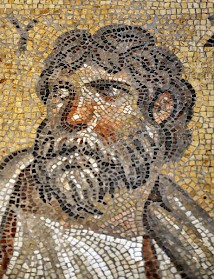
In 431, the Archidamian War between Sparta and Athens broke out, and the Spartan commander Brasidas was able to invade the Athenian possessions in the far north, capturing (among other towns) Amphipolis. The Athenian commander Thucydides arrived too late to save the city, although he was able to prevent the fall of Eïon. Thucydides was sent into exile and became a famous historian, and Amphipolis became a main problem when the Spartans and Athenians later concluded an armistice. The latter refused to sign a peace treaty until they had recovered their colony, but their commander, the statesman Cleon, was killed in action when he tried to get back the lost city.
After this second catastrophe, the Athenians were willing to come to terms, and because Sparta promised to give back the city, the Peace of Nicias could be signed in 421. Unfortunately, the Amphipolitans, among whom the Athenian settlers were a minority, refused to return to their Athenian alliance, and the peace turned out to be an uneasy one. In 413, war was renewed (the Decelean or Ionian War) and after the final defeat of Athens in 404, regaining Amphipolis was further away than ever.
Fourth century BCE

In the first half of the fourth century, Athenian diplomats did everything they could to get back their colony, but their chances became smaller and smaller, not in the least because Amphipolis grew larger and larger, and could muster more and more soldiers. In 365, however, an opportunity offered itself. In Macedonia, the young king Perdiccas III needed Athenian help and was forced to cooperate with the Athenian commander Timotheus to reconquer Amphipolis. Once Amphipolis had been captured, however, the Macedonian king kept it for himself and broke off the collaboration. Few Athenians will have wept whenPerdiccas was defeated and killed by the Illyrians in 360.
The new Macedonian ruler was Philip II. Athens opened secret negotiations, offered to support him, and asked for Amphipolis. The Macedonian replied to this overture by removing the garrison from Amphipolis, which was now independent again. Briefly, the Athenians believed that they could finally attack an isolated town without allies, but in 357, the Persian satrap of Caria, Maussolus, provoked a revolt among the Athenian allies and Amphipolis was saved from an attack. At least, from an attack by the Athenians, because it was now Philip's turn to proceed against the city, which was forced to surrender. The Amphipolitans were treated kindly, although the Macedonian ruler ordered several people to be exiled and placed a garrison in the city.
Macedonian town

From now on, Amphipolis was part of Macedonia, and several important officers of Philip's son Alexander the Great came from the town (e.g., Erigyius and Nearchus). Alexander seems to have liked Amphipolis, because one of his last plans was to spend no less than 315 ton silver for a splendid new temple in the city that was to be dedicated to Artemis Tauropolus. It was never built, but after Alexander's death on 11 June 323 in Babylon, his wife queen Roxane settled in Amphipolis, which appears to have become one of the residences of the Macedonian royals. In 179, king Philip V died in the town.
By now, Macedonia was in decline. In fact, it had never recovered from the exploits of Alexander, who had taken away more soldiers than the country could afford to miss. Although the Macedonian unity that had been created by Philip remained intact, the kingdom never regained its former strength. It was defeated by the Romans in the Second Macedonian War (which culminated in the battle of Cynoscephalae in 197), and again in the Third Macedonian War (which ended at Pydna in 168). The Roman general Lucius Aemilius Paullus reorganized the old kingdom by dividing it into four administrative units. Amphipolis was to be the capital of one of these.
Roman town
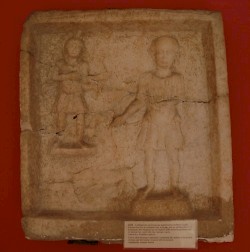
Within a generation, Macedonia had been converted into a province of the Romans, who built the Via Egnatia. It became a war target for king Mithridates VI Eupator of Pontus, who fought an epic war against the Romans (First Mithridatic War; 89-85), and in 42, it was the base of the army of the triumvirs in their war against Brutus and Cassius (the assassins of Julius Caesar), which ended in the battle of Philippi, not far from Amphipolis.
The victorious triumvirs expressed their gratitude to the Amphipolitans by giving their city the status of free town (civitas libera) an act that was commemorated on the Amphipolitan coinage but became a dead letter during the empire. Soldiers from the city served in the Tenth Legion Gemina.
Christianity

Christianity appears to have arrived early: in 50, the apostle Paul visited Amphipolis on his way to Thessaloniki. The town was the seat of a bishop and there must have been a church. It is not known where this building can have been, because the remains of the oldest church that has been excavated date back to the late fifth century. In Late Antiquity, there were several basilicas.
By that time, Eïon was again inhabited; it was to remain a Byzantine stronghold for quite some time, called Chrysopolis.
Other excavations have brought to light Macedonian and Hellenistic tombs and the old enceinte, probably build by Hagnon, which has a length of 2¼ km and enclosed the urban center.

A more recent, Byzantine wall was about 7½ km long and enclosed a broader area; parts of it are still standing to a height of seven meter. The city boasted temples for Heracles, Asclepius, the divine Twins, Athena, Clio (one of the nine muses), the Phrygian goddess Cybele, the Egyptian deities, and Totoes (the Thracian counterpart of Hypnos, "sleep"). The gymnasium and a stone lion date back to the fourth century BCE; the aqueduct was build in the Roman age.






